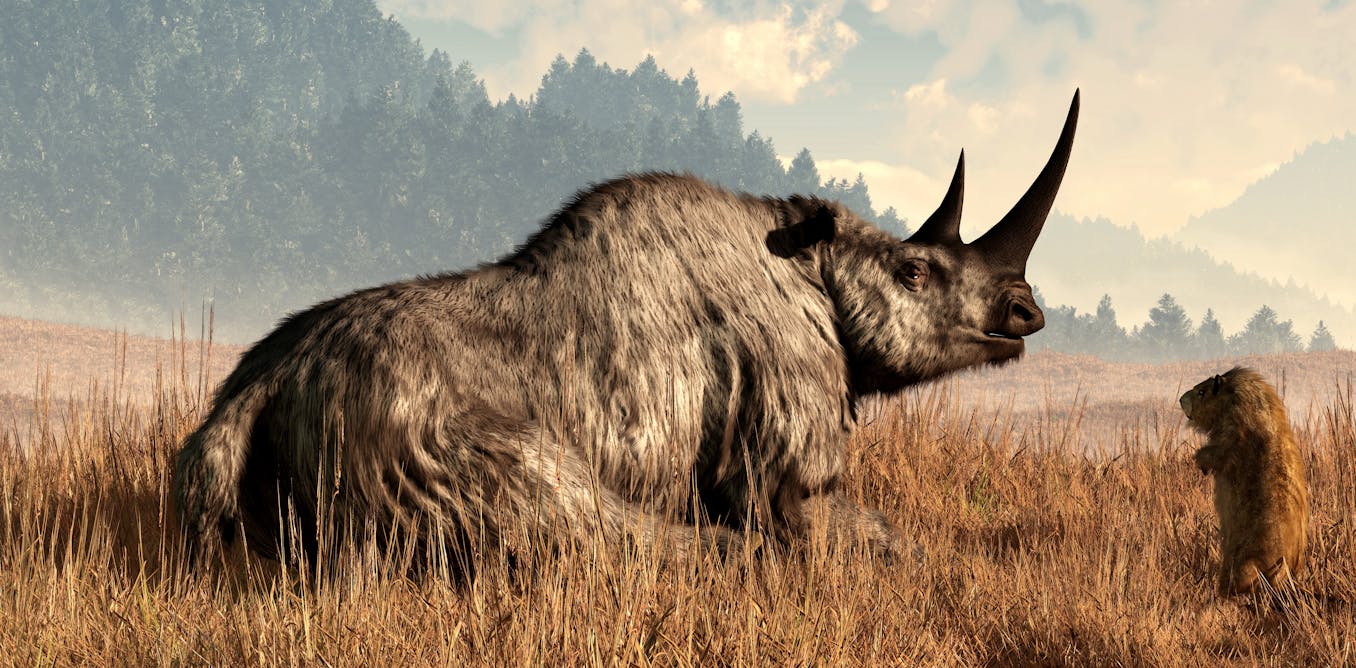Now Reading: If we must bring back extinct species, let’s focus on the giant herbivores
-
01
If we must bring back extinct species, let’s focus on the giant herbivores
If we must bring back extinct species, let’s focus on the giant herbivores

The American biotech company Colossal Biosciences recently made a big announcement that they had “de-extincted” the dire wolf, a canine species that disappeared about 10,000 years ago. However, the three animals they introduced are essentially modern grey wolves with some genetic modifications. Regardless of whether they are considered dire wolves or not, Colossal Biosciences claimed to have engineered lost ecological functions, sparking thoughts on the ecological roles missing in today’s ecosystems due to extinctions caused by humans.
Ecological functions refer to the impact animals have on the ecosystems they inhabit. Various animals like honeybees, beavers, elephants, ants, and termites play crucial roles in pollination, altering landscapes, and decomposing plant matter. While it remains unclear what distinct functions Colossal’s engineered wolves may have compared to grey wolves, the possibility exists that they could hunt different prey in different ways or locations. However, with only three wolves, it is unlikely they can effectively showcase new ecological effects. Nevertheless, the idea that these wolves could fulfill diverse ecological roles from grey wolves is more intriguing than the notion of resurrecting the dire wolf.
Large animals weighing over half a ton have also faced significant impacts from human activities, with many species disappearing in recent millennia. As our ancestors migrated and settled in new territories, large animals such as giant ground sloths, mammoths, elephants, and others went extinct at a higher rate than smaller species. From the Americas to Europe and Asia, numerous large animal species vanished as humans spread across these lands.
Australia, for instance, lost its diverse array of large animals, including diprotodons, giant kangaroos, and other unique species. The continent also saw the disappearance of apex predators and herbivores, leading to significant changes in ecosystems. The absence of large herbivores disrupted nutrient cycles, altered vegetation patterns, and increased grazing pressure from smaller herbivores, impacting the landscape’s transformation.
While the idea of re-engineering large animals like diprotodons or marsupial lions to restore lost ecological functions sounds impressive, it may remain a challenging feat for science to achieve. Instead of focusing on genetic manipulation to reintroduce extinct species, the emphasis should be on conserving and restoring ecological functions using existing species within their natural habitats. This approach may not be as groundbreaking as genetic engineering but can be more practical and beneficial for ecological restoration efforts.






